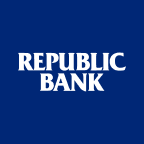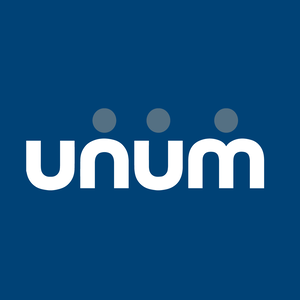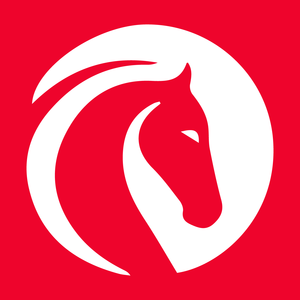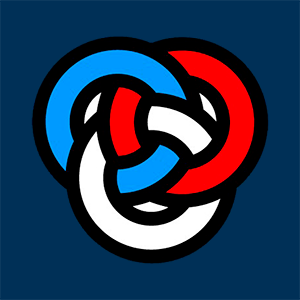
Horace Mann Educators (HMN)
We wouldn’t recommend Horace Mann Educators. Its weak sales growth and low returns on capital show it struggled to generate demand and profits.― StockStory Analyst Team
1. News
2. Summary
Why We Think Horace Mann Educators Will Underperform
Founded in 1945 and named after the 19th-century education reformer known as the "father of American public education," Horace Mann Educators (NYSE:HMN) is an insurance company that specializes in providing auto, property, life, and retirement products tailored for educators and other public service employees.
- Annual book value per share declines of 3.2% for the past five years show its capital management struggled during this cycle
- Low return on equity reflects management’s struggle to allocate funds effectively
- Costs have risen faster than its revenue over the last four years, causing its combined ratio to worsen by 5.7 percentage points


Horace Mann Educators doesn’t satisfy our quality benchmarks. We believe there are better opportunities elsewhere.
Why There Are Better Opportunities Than Horace Mann Educators
Why There Are Better Opportunities Than Horace Mann Educators
At $43.64 per share, Horace Mann Educators trades at 1.2x forward P/B. This multiple is cheaper than most insurance peers, but we think this is justified.
Cheap stocks can look like a great deal at first glance, but they can be value traps. They often have less earnings power, meaning there is more reliance on a re-rating to generate good returns - an unlikely scenario for low-quality companies.
3. Horace Mann Educators (HMN) Research Report: Q3 CY2025 Update
Educator-focused insurance company Horace Mann Educators (NYSE:HMN) reported Q3 CY2025 results topping the market’s revenue expectations, with sales up 6.4% year on year to $438.5 million. Its non-GAAP profit of $1.36 per share was 22.2% above analysts’ consensus estimates.
Horace Mann Educators (HMN) Q3 CY2025 Highlights:
Company Overview
Founded in 1945 and named after the 19th-century education reformer known as the "father of American public education," Horace Mann Educators (NYSE:HMN) is an insurance company that specializes in providing auto, property, life, and retirement products tailored for educators and other public service employees.
Operating through two main divisions—Retail and Worksite—Horace Mann serves approximately one million households, with about 80% of its customer base consisting of educators. The Retail Division offers auto, home, and umbrella insurance policies with educator-specific benefits, such as liability coverage for transporting students and reimbursement for stolen school fundraising items. This division also markets 403(b) tax-qualified annuities, retirement plans, and life insurance products tailored to educators' unique financial needs.
The Worksite Division focuses on employer-sponsored benefits and supplemental insurance products distributed through workplace channels. These include accident, critical illness, disability, and term life insurance that schools and districts can offer as part of employee benefit packages to help with recruitment and retention.
A school district might partner with Horace Mann to provide group disability coverage for all teachers as part of their benefits package, while individual teachers could separately purchase auto insurance with educator-specific discounts through the company's Retail Division. The company also offers programs addressing educators' unique financial challenges, such as its Student Loan Solutions program that provides guidance on qualifying for federal student loan forgiveness available to public sector employees.
Horace Mann maintains partnerships with national, state, and local education associations, which helps the company identify emerging financial wellness issues affecting educators. The company distributes its products through local agents who serve as trusted advisors in their educational communities, as well as through centralized phone and online channels.
4. Life Insurance
Life insurance companies collect premiums from policyholders in exchange for providing a future death benefit or retirement income stream. Interest rates matter for the sector (and make it cyclical), with higher rates allowing insurers to reinvest their fixed-income portfolios at more attractive yields and vice versa. Additionally, favorable demographic shifts, such as an aging population, are driving strong demand for retirement products while AI and data analytics offer significant opportunities to improve underwriting accuracy and operational efficiency. Conversely, the industry faces headwinds from persistent competition from agile insurtechs that threaten traditional distribution models.
Horace Mann Educators competes with large national insurance providers like Allstate, State Farm, Liberty Mutual, and Nationwide in the property and casualty market. In the retirement and financial products space, its competitors include TIAA, Voya Financial (NYSE:VOYA), and Lincoln National (NYSE:LNC).
5. Revenue Growth
Insurers earn revenue three ways. The core insurance business itself, often called underwriting and represented in the income statement as premiums earned, is one way. Investment income from investing the “float” (premiums collected upfront not yet paid out as claims) in assets such as fixed-income assets and equities is the second way. Fees from various sources such as policy administration, annuities, or other value-added services is the third. Over the last five years, Horace Mann Educators grew its revenue at a tepid 5.3% compounded annual growth rate. This fell short of our benchmark for the insurance sector and is a poor baseline for our analysis.
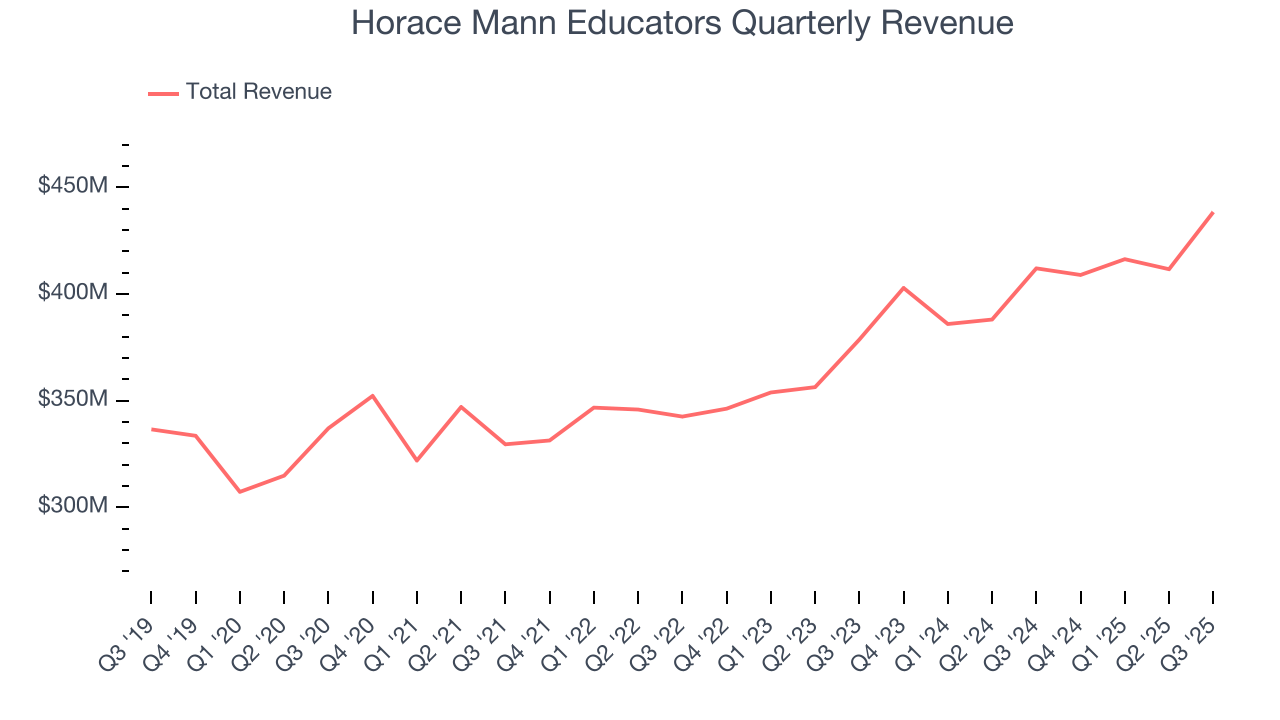
Long-term growth is the most important, but within financials, a half-decade historical view may miss recent interest rate changes and market returns. Horace Mann Educators’s annualized revenue growth of 8% over the last two years is above its five-year trend, suggesting some bright spots. 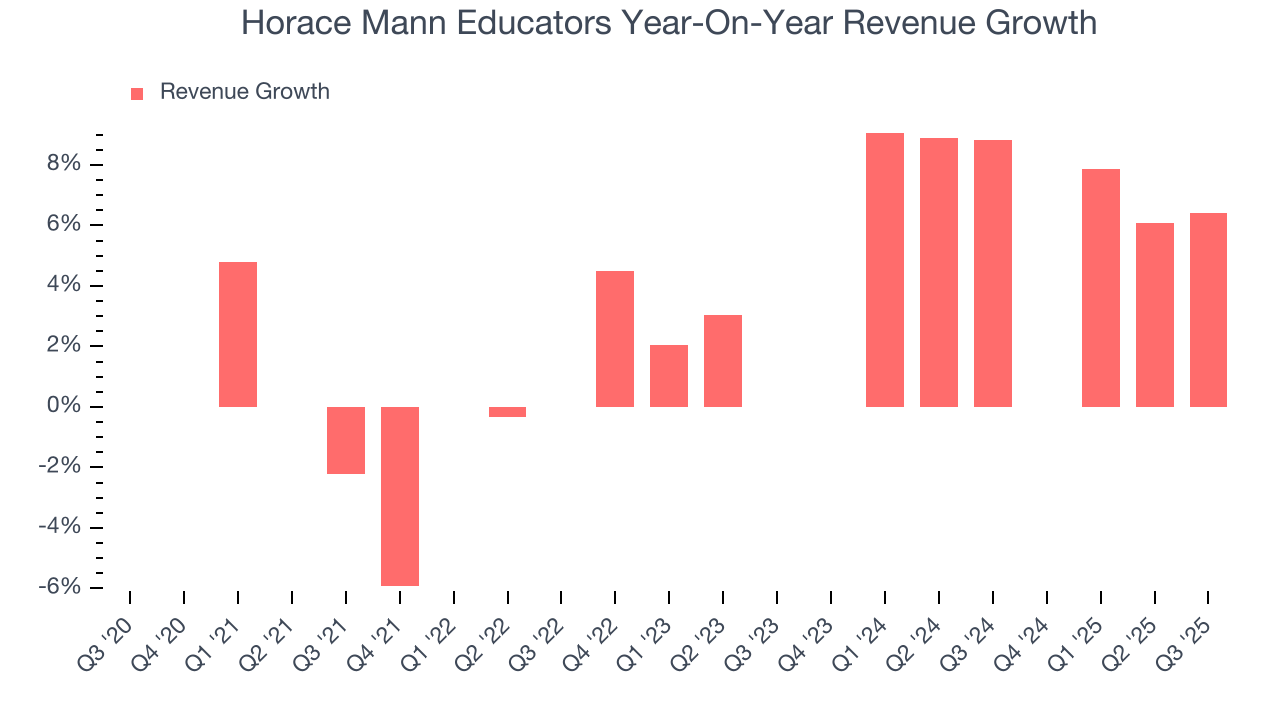 Note: Quarters not shown were determined to be outliers, impacted by outsized investment gains/losses that are not indicative of the recurring fundamentals of the business.
Note: Quarters not shown were determined to be outliers, impacted by outsized investment gains/losses that are not indicative of the recurring fundamentals of the business.
This quarter, Horace Mann Educators reported year-on-year revenue growth of 6.4%, and its $438.5 million of revenue exceeded Wall Street’s estimates by 0.9%.
Net premiums earned made up 71% of the company’s total revenue during the last five years, meaning insurance operations are Horace Mann Educators’s largest source of revenue.
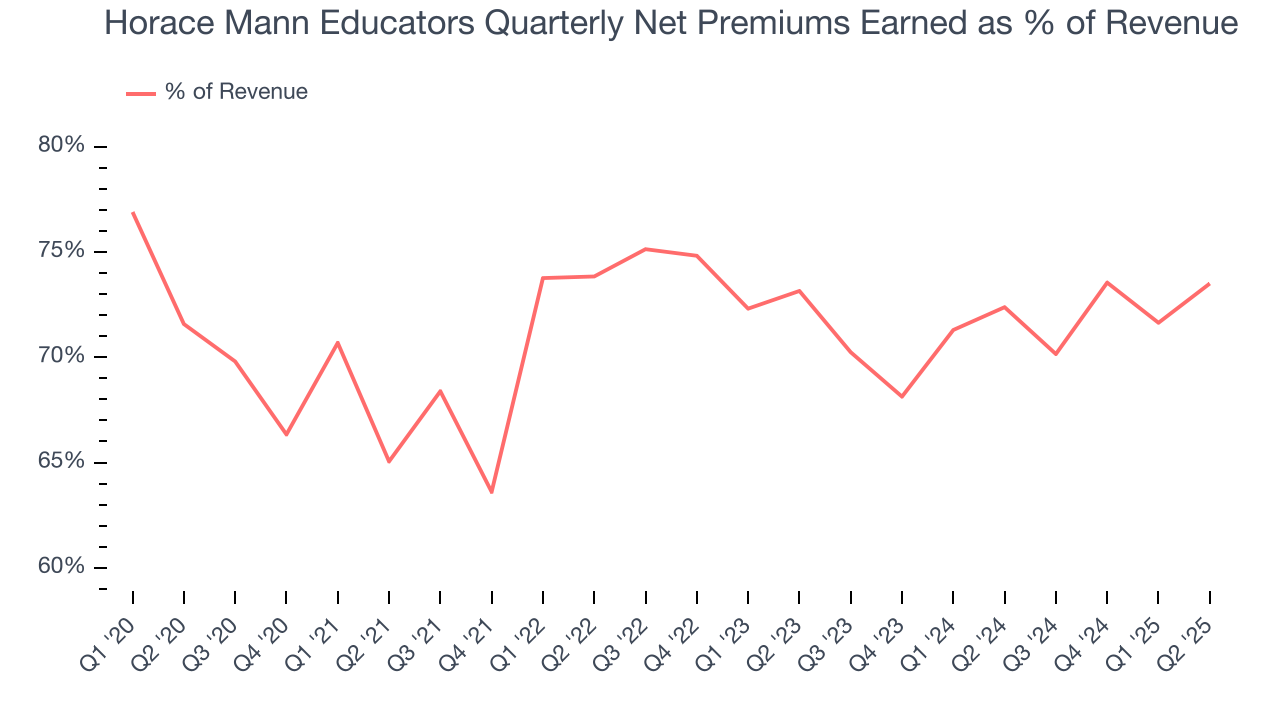
Net premiums earned commands greater market attention due to its reliability and consistency, whereas investment and fee income are often seen as more volatile revenue streams that fluctuate with market conditions.
6. Net Premiums Earned
When insurers sell policies, they protect themselves from extremely large losses or an outsized accumulation of losses with reinsurance (insurance for insurance companies). Net premiums earned are therefore net of what’s ceded to reinsurers as a risk mitigation and transfer strategy.
Horace Mann Educators’s net premiums earned has grown at a 5.4% annualized rate over the last five years, worse than the broader insurance industry and in line with its total revenue.
When analyzing Horace Mann Educators’s net premiums earned over the last two years, we can see that growth accelerated to 7.8% annually. This performance was similar to its total revenue.
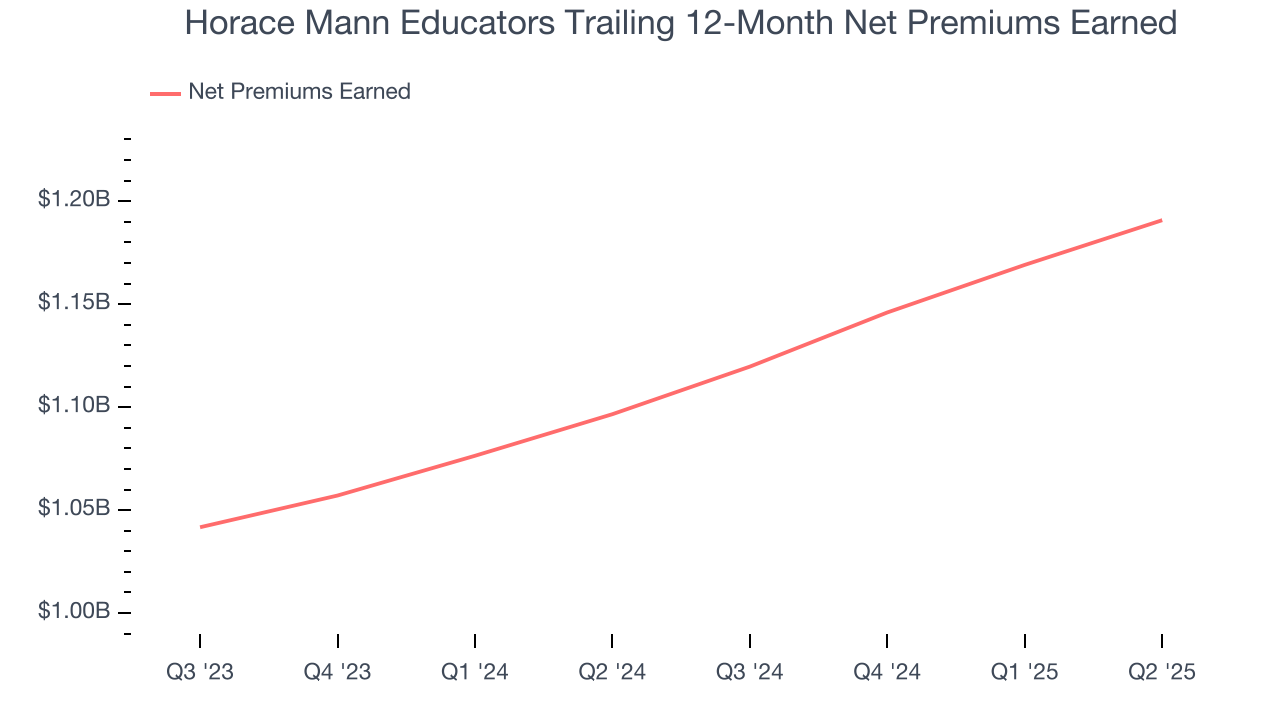
7. Combined Ratio
Revenue growth is one major determinant of business quality, and the efficiency of operations is another. For insurance companies, we look at the combined ratio rather than the operating expenses and margins that define sectors such as consumer, tech, and industrials.
The combined ratio sums the costs of underwriting (salaries, commissions, overhead) as well as what an insurer pays out in claims (losses) and divides it by net premiums earned. If a company boasts a combined ratio under 100%, it is underwriting profitably. If above 100%, it is losing money on its core operations of selling insurance policies.
Given the calculation, a lower expense ratio is better. Over the last four years, Horace Mann Educators’s combined ratio has increased by 1.5 percentage points, going from 92.2% to 93.8%. Luckily, it seems the company has recently taken steps to address its expense base as its combined ratio improved by 17.6 percentage points on a two-year basis.
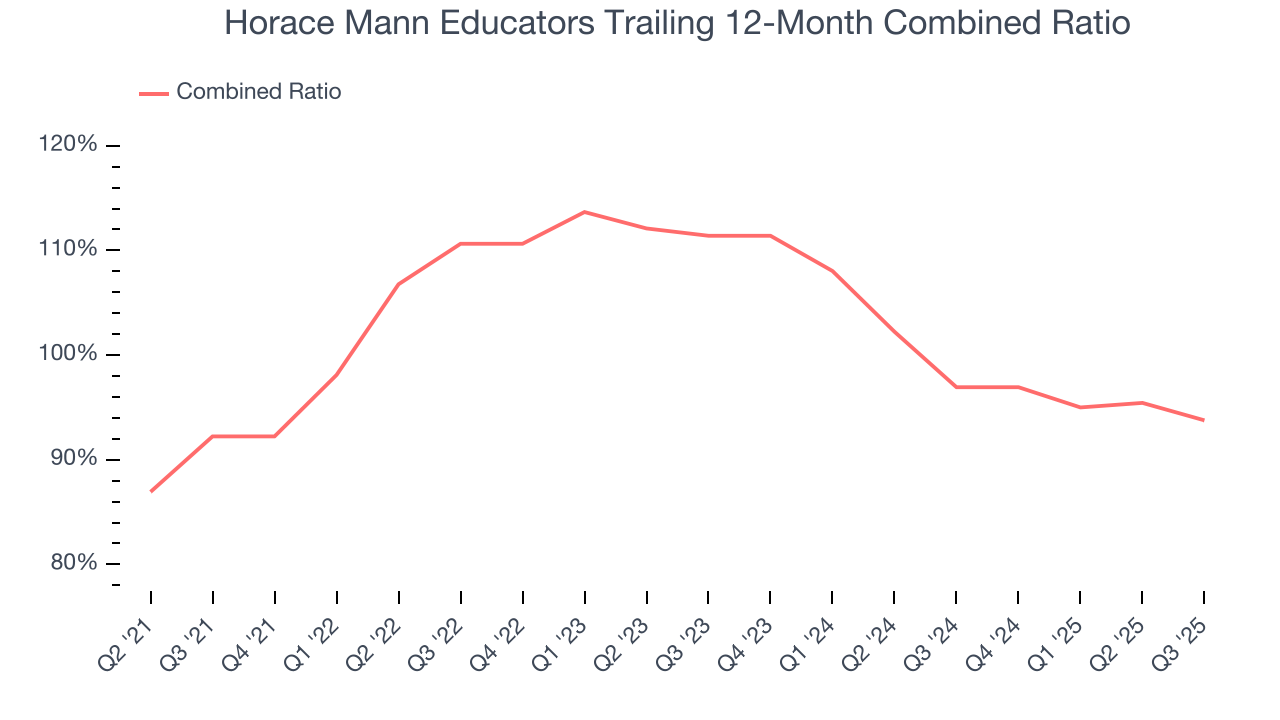
Horace Mann Educators’s combined ratio came in at 87.8% this quarter. This result was 5 percentage points better than the same quarter last year.
8. Earnings Per Share
We track the long-term change in earnings per share (EPS) for the same reason as long-term revenue growth. Compared to revenue, however, EPS highlights whether a company’s growth is profitable.
Horace Mann Educators’s EPS grew at a decent 11.1% compounded annual growth rate over the last five years, higher than its 5.3% annualized revenue growth. This tells us the company became more profitable on a per-share basis as it expanded.
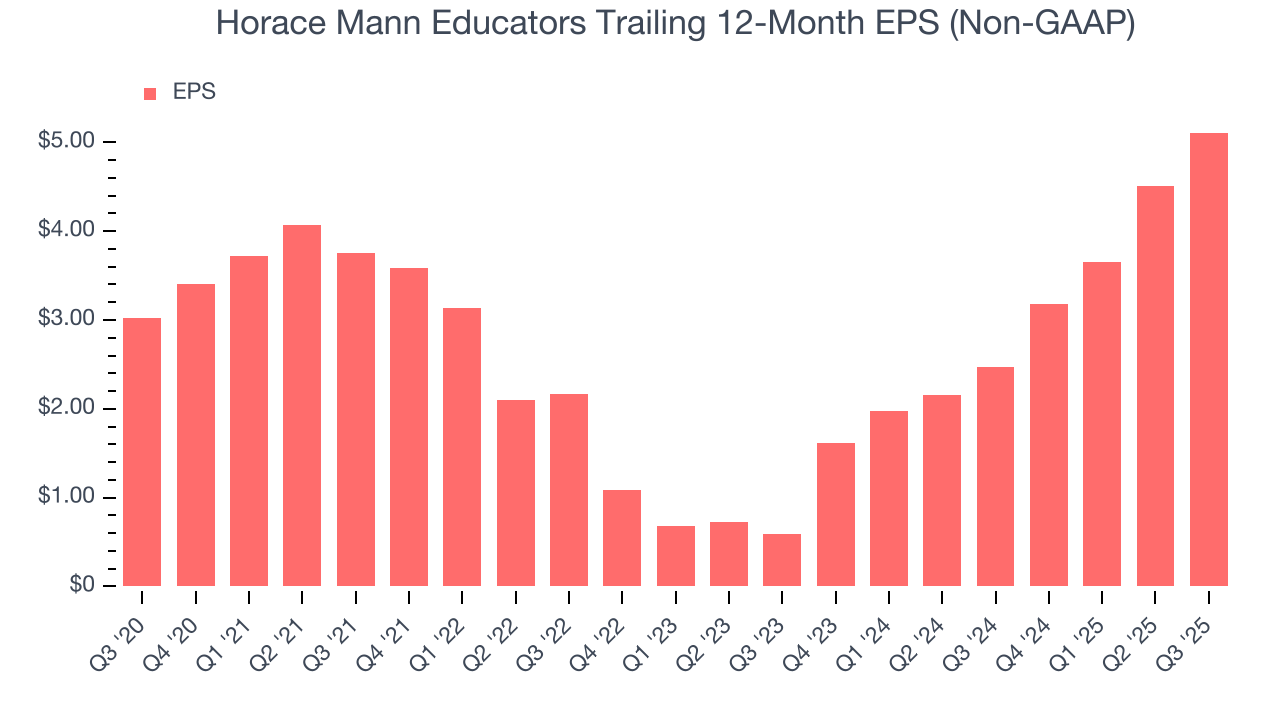
Like with revenue, we analyze EPS over a more recent period because it can provide insight into an emerging theme or development for the business.
For Horace Mann Educators, its two-year annual EPS growth of 194% was higher than its five-year trend. This acceleration made it one of the faster-growing insurance companies in recent history.
In Q3, Horace Mann Educators reported adjusted EPS of $1.36, up from $0.76 in the same quarter last year. This print easily cleared analysts’ estimates, and shareholders should be content with the results. Over the next 12 months, Wall Street expects Horace Mann Educators’s full-year EPS of $5.11 to shrink by 14.1%.
9. Book Value Per Share (BVPS)
Insurance companies are balance sheet businesses, collecting premiums upfront and paying out claims over time. The float – premiums collected but not yet paid out – are invested, creating an asset base supported by a liability structure. Book value captures this dynamic by measuring:
- Assets (investment portfolio, cash, reinsurance recoverables) - liabilities (claim reserves, debt, future policy benefits)
BVPS is essentially the residual value for shareholders.
We therefore consider BVPS very important to track for insurers and a metric that sheds light on business quality. While other (and more commonly known) per-share metrics like EPS can sometimes be lumpy due to reserve releases or one-time items and can be managed or skewed while still following accounting rules, BVPS reflects long-term capital growth and is harder to manipulate.
Horace Mann Educators’s BVPS declined at a 3.2% annual clip over the last five years. However, BVPS growth has accelerated recently, growing by 17.1% annually over the last two years from $25.74 to $35.31 per share.
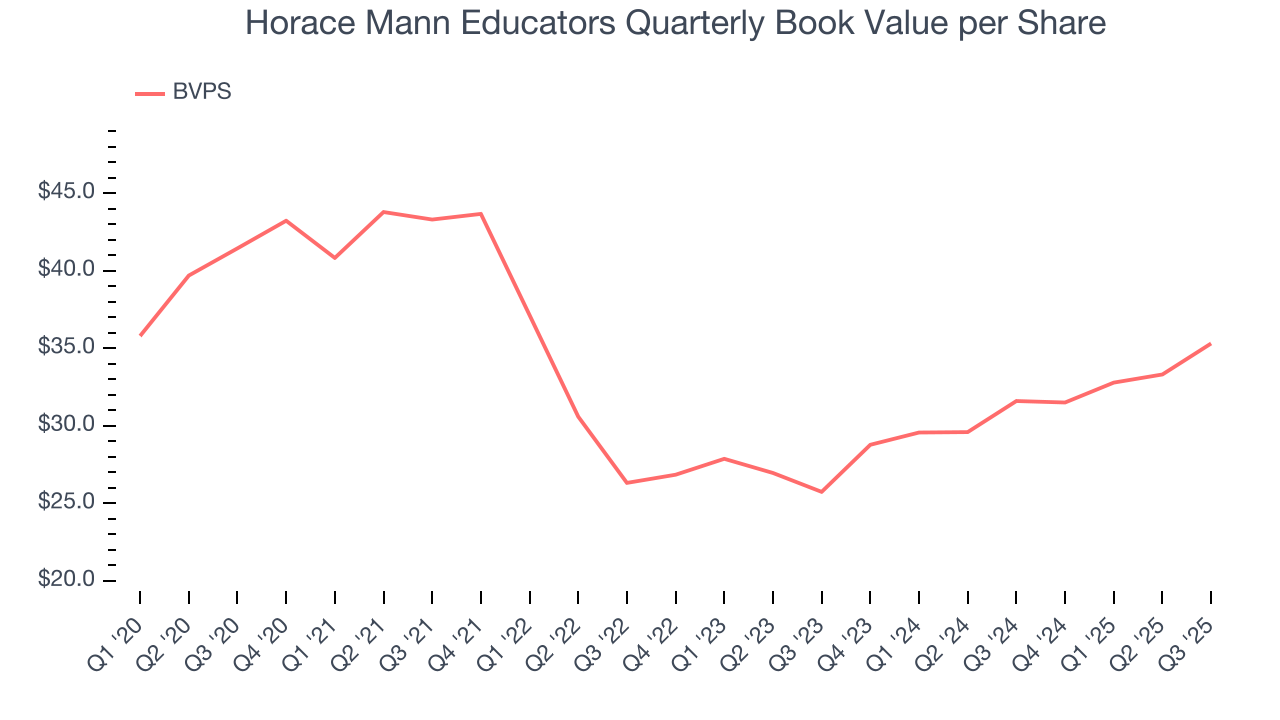
Over the next 12 months, Consensus estimates call for Horace Mann Educators’s BVPS to grow by 20.4% to $39.58, elite growth rate.
10. Balance Sheet Assessment
The debt-to-equity ratio is a widely used measure to assess a company's balance sheet health. A higher ratio means that a business aggressively financed its growth with debt. This can result in higher earnings (if the borrowed funds are invested profitably) but also increases risk.
If debt levels are too high, there could be difficulties in meeting obligations, especially during economic downturns or periods of rising interest rates if the debt has variable-rate payments.
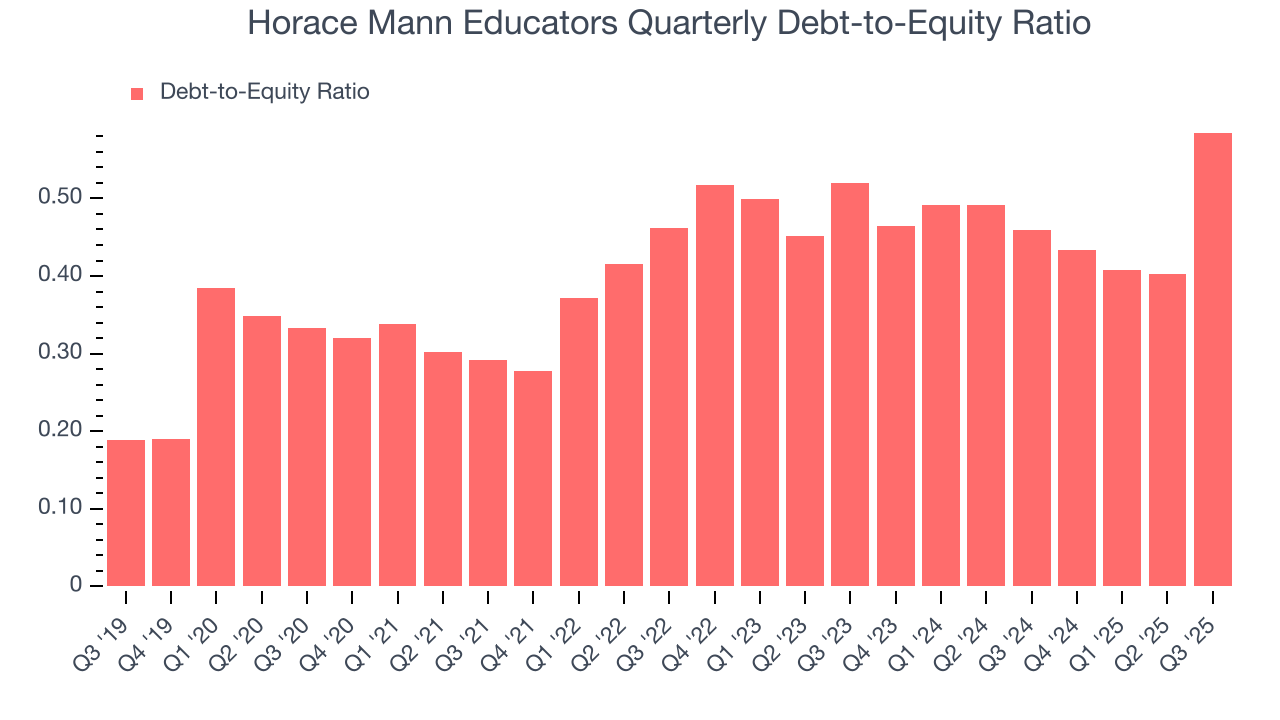
Horace Mann Educators currently has $842.9 million of debt and $1.44 billion of shareholder's equity on its balance sheet, and over the past four quarters, has averaged a debt-to-equity ratio of 0.5×. We think this is safe and raises no red flags. In general, we’re comfortable with any ratio below 1.0× for an insurance business. Anything below 0.5× is a bonus.
11. Return on Equity
Return on Equity, or ROE, ties everything together and is a vital metric. It tells us how much profit the insurer generates for each dollar of shareholder equity entrusted to management. Over a long period, insurers with higher ROEs tend to compound shareholder wealth faster through retained earnings, buybacks, and dividends.
Over the last five years, Horace Mann Educators has averaged an ROE of 6.6%, uninspiring for a company operating in a sector where the average shakes out around 12.5%.
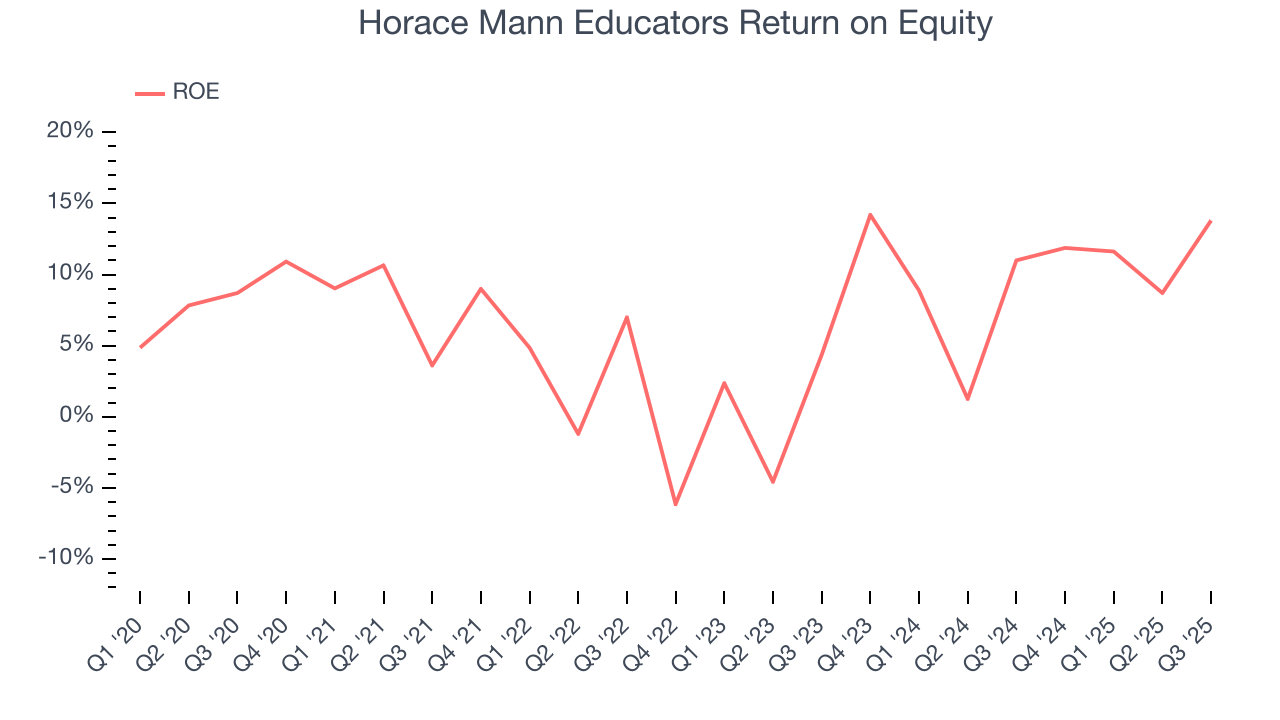
12. Key Takeaways from Horace Mann Educators’s Q3 Results
It was good to see Horace Mann Educators beat analysts’ EPS expectations this quarter. We were also happy its revenue narrowly outperformed Wall Street’s estimates. On the other hand, its book value per share missed. Overall, this print was mixed. The stock remained flat at $45.24 immediately following the results.
13. Is Now The Time To Buy Horace Mann Educators?
Updated: December 7, 2025 at 11:38 PM EST
The latest quarterly earnings matters, sure, but we actually think longer-term fundamentals and valuation matter more. Investors should consider all these pieces before deciding whether or not to invest in Horace Mann Educators.
We see the value of companies helping consumers, but in the case of Horace Mann Educators, we’re out. First off, its revenue growth was uninspiring over the last five years. And while its estimated BVPS growth for the next 12 months is great, the downside is its BVPS has declined over the last five years. On top of that, its projected EPS for the next year is lacking.
Horace Mann Educators’s P/B ratio based on the next 12 months is 1.2x. This valuation is reasonable, but the company’s shaky fundamentals present too much downside risk. There are better investments elsewhere.
Wall Street analysts have a consensus one-year price target of $50.67 on the company (compared to the current share price of $43.64).
Although the price target is bullish, readers should exercise caution because analysts tend to be overly optimistic. The firms they work for, often big banks, have relationships with companies that extend into fundraising, M&A advisory, and other rewarding business lines. As a result, they typically hesitate to say bad things for fear they will lose out. We at StockStory do not suffer from such conflicts of interest, so we’ll always tell it like it is.

